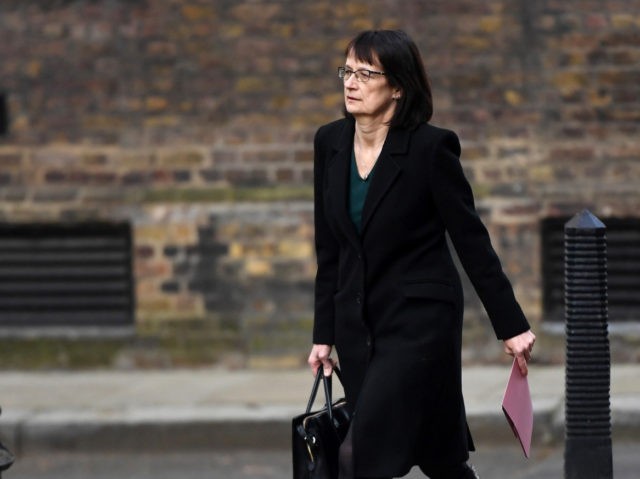A UK government health chief has come under heavy fire in a generally government-loyal broadsheet newspaper over her controversial analysis of Chinese coronavirus hospitalisation data.
Dr Jenny Harries, the chief executive of the UK Health Security Agency (UKHSA), has drawn scrutiny over her “dodgy” description of COVID hospitalisation data provided to UK Health Secretary Sajid Javid.
Harries is believed to have been the source for the idea that there is typically a 17-day lag between being infected with the coronavirus and being hospitalised with the disease, a claim that was later used by the Health Secretary to make a case for further lockdown restrictions.
However, according to a report by the The Telegraph, the 17-day figure given by Harries has been criticised as being “generous”, with officials at the UKHSA telling the typically government-friendly broadsheet that the current lag between infection and hospitalisation is believed to be approximately 12 days.
The disputed claim made by Mr Javid was widely seen as an attempt to strengthen the case for urgent new COVID-19 restrictions, on the basis that the country could be on the brink of a major spike in hospitalisations due to the omicron variant of the virus.
Data from the government’s Office for National Statistics (ONS) has also cast doubt on the 17-day lag, with analysis conducted by former treasury statistician Simon Briscoe suggesting that the delay between infection and hospitalisation stands at an average of ten days.
Speaking on the discrepancy, Briscoe called the use of the “dodgy” 17-day figure as either a “deliberate statistical sleight of hand designed to deceive, or incompetence”.
Briscoe went on to say that if the move was deliberate, it would suggest that the government was “in effect trying to buy time, as officials realise that data of rising hospitalisations is needed to justify lockdown.”
“The difference of a week in the lag between infection and hospitalisation is important because if you believe the ONS numbers, you would already expect hospitalisations to be picking up rather more sharply than they are,” Briscoe said.
“Hospitalisations will need to be above (probably well above) the averages of recent months to justify lockdown,” he added.
“Could it just be the case that hospitalisations, serious illness and deaths are not following the cases figure upwards, as happened in South Africa?” Briscoe went on to ask.
UK to Consider Imposing New Lockdown Rules as Early as Next Week: Reporthttps://t.co/BcsJ4ID0fj
— Breitbart London (@BreitbartLondon) December 25, 2021
Harries is not the only government scientist to come under fire in recent days.
The Scientific Advisory Group for Emergencies (SAGE) — which advises the government in relation to the Chinese Coronavirus — was accused of publishing doomsday predicting material over recently released modelling.
SAGE modelling predicted that hospitalisations due to the omicron variant could hit 10,000 a day in the UK, while daily deaths could range from 600 to as high as 6,000.
Senior Conservative backbencher Sir Charles Walker criticised the use of “ultra-worst case scenario modelling” by government experts, saying that it has undermined public trust in science and scientists.
Harries herself also drew criticism as being “too gloomy”, to which she insisted that her stance was justified as omicron is a “serious threat”.
“So those who know me know I’m a naturally optimistic individual, so I usually hang on to the positives,” Harries said. “But I think what we’ve seen with omicron is something really quite unusual.”

COMMENTS
Please let us know if you're having issues with commenting.